This is an execellent run down of Warmaster which now lives on in MANY different games like Pike and Shotte, ACW and others.
Warcry Winter Showdown
2025 gaming is off to a great start after Sunday’s Warcry action. I had been planning this even with folks for a few months, trying to get adult’s schedules to align is quite the challenge afterall and Sunday, it happened. We met up over by Old Guard Games (Napoleon’s 2.0) and they had plenty of table space for a couple of Warcry boards. Two of the players had never played before so the first games were teaching games for the most part and I went through the rules quickly before getting stuck into battle. As I’ve played just under 20 times or so, I have the rules down pretty well overall, but there are always a few niggling edge cases to make rulings on in this type of game anyway. I get blamed a lot for overlooking rules when teaching but it’s ALWAYS some sort of edge case, yet I still get yelled at, but I digress.
The first game was the Untamed Beasts (the OG) vs the newish Black Talons mega hunters which felt like the Teen Titans going up against some Viltrumites. We had a “take out each other’s Daggers” mission and while I thought I would get blown to shit, it was a very close match where my Rocktusks took out the Black Talon elf really quick and nearly took out the crossbow gal as well before my dagger was beaten down by Naeve who is a ridiculous powerhouse (and looks like Anissa the Viltrumite as well…). Great game. I was running double Rock Prowler and had a good time with that list.
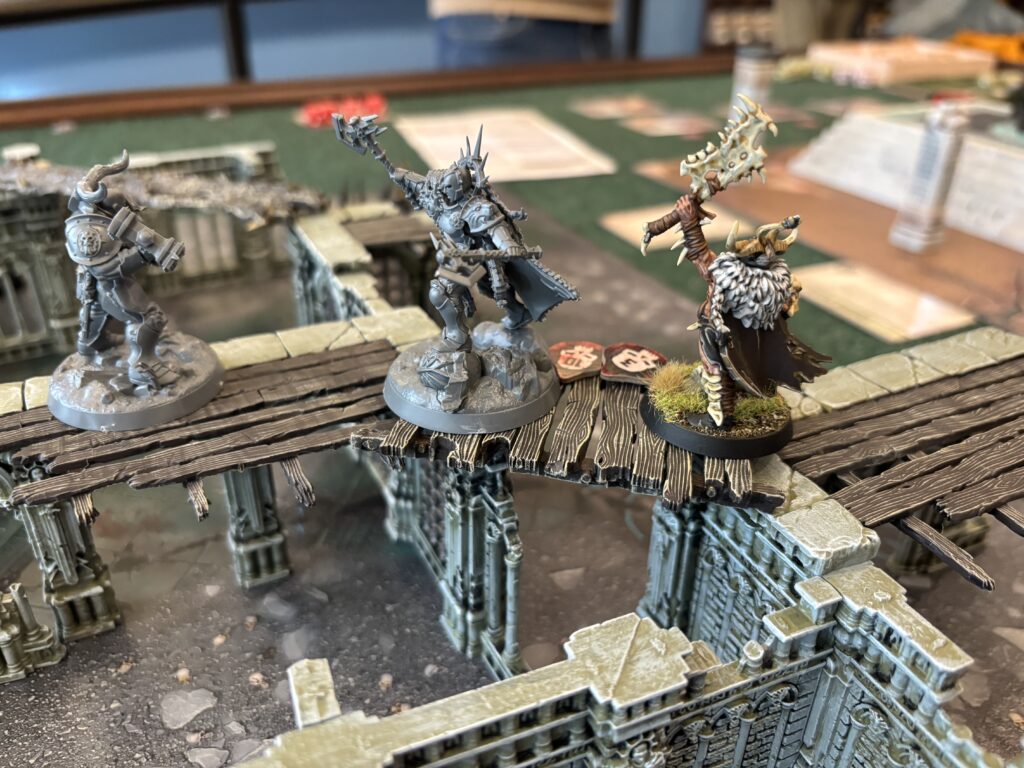
uunpainted Neave and the leader of the Untamed Beasts duking it out
Meanwhile the Royal Beastflayers and Rotmire Creed duked it out on a second board. I just got one snap of this one and didn’t get much info except they had some fun and also had nearly the same twist and the same mission as we did.
The third game was a 4 player Tower capture scenario where I busted out my Wildecorps Hunters. Even with 800 points, I was able to field a good force and 4 dogs! This was my first time playing them and strategically I was going to use the dogs to hold down the enemies and then knock the shit out of anyone on the tower with the Arbalester. I had some good rolls there to pop off some enemies but my dogs could not handle the melee meatgrinder near the tower well enough to get the (death grip) grabs. My sweepers that were going to come in and take the tower were wiped out by the boss man of the Royal Beastflayers. In the end, the Beastflayers and the Rotmire Creed decimated each other and the Black Talons tried some of their tricks to teleport to the top of the tower which, despite the fact that Neave Blacktalon was taken out of the game by a TRIPLE 6 ROLL from the Rotmires, one of their meaties climbed to the top of the tower and won them the game. They are really tough to take out and Neave’s move 7 makes them challenging to deal with on missions where the rest get outmaneuvered by chaffffffff.
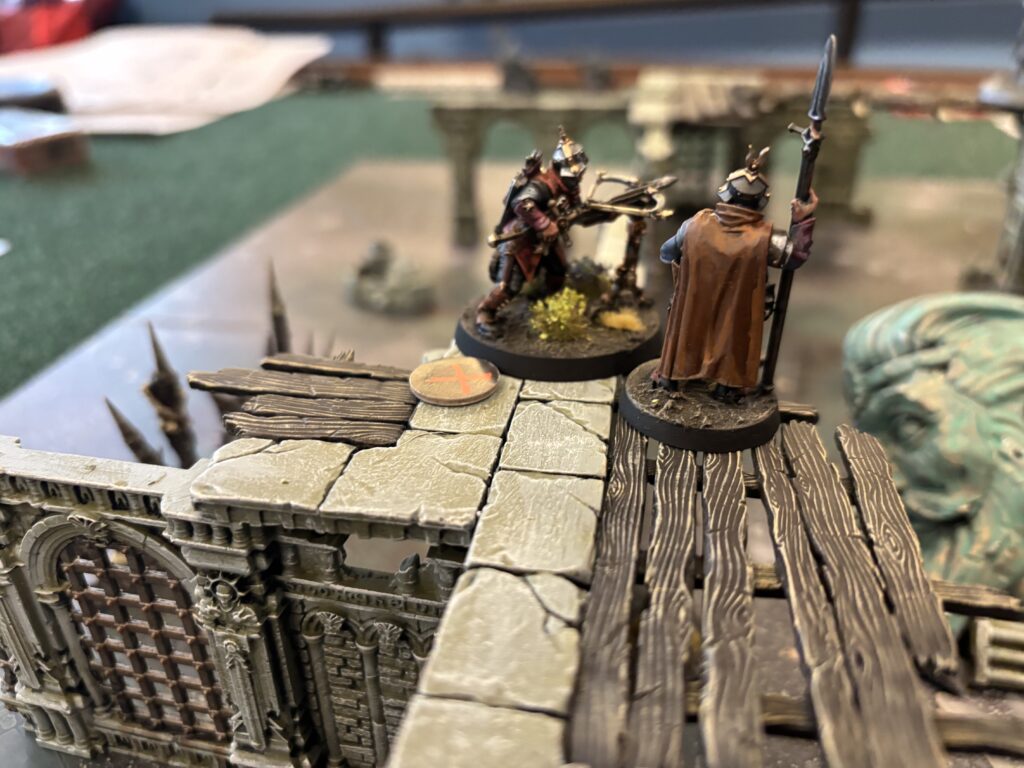
Painting
I painted pretty furiously in the last week to get my last 6 models done for the Untamed Beasts. This included a few models that I really didn’t need (2 extra plainsrunners) that I had put together to make a silly mostly plainsrunners list at one point. I think the Untamed Beasts have a lot of solid options but my superstars are the Rocktusk prowlers, which I procrastinated a long time to paint as I’m traditionally not good at horses/animals. When I finally did, they turned out great except that when I varnished them they got frosted IN WINTER. I have no idea at first how this happened except that my brush might have been too wet with water to start the process, and when I mixed the batch up of varnish to paint on, the water got trapped in the recesses. Later I realized that I had used Lamia Medium rather than Contrast Medium by mistake, so that frosting was the medium and NOT trapped water. I tried olive oil and gloss coating them again, and neither worked, so I had to reshade various areas and it worked out OK, not perfect, but what is?

All in all, a great day of Warcry, one of GW’s best games and it made the work of putting together and painting all that terrain worth while. Now that I’ve finished my Beasts, it’s time to get back to the terrain painting… ugh.
Nosferatu – a successful remake in a world of shytte remakes
We get a lot of remakes, Roller Ball, Total Recall, Planet of the Apes. Many of them are jack shit and should have probably gone straight to DVD / Streaming. With Nosferatu, we got a real good one. It’s been a very, very long time since I’ve seen the original, which I do not think I’ve seen in it’s entirety ever, just caught parts when it was on TV as a kid mostly not changing the channel out of curiosity (like when Metropolis would be on).

I’m not a film critic and mostly like trash movies, but the cinematography was amazing, the set design, costume design and atmosphere was spot on. Acting was superb from everyone. Pacing is critical in this type of film and Nosferatu is a long film at around 2 hours. Knowing the story pretty well, it took a long time during the middle of the film to get the conclusion started, but when it got rolling, the payoff was well worth it. Apparently there is going to be a longer version at some point, likely with a bit more in the beginning of the story.
The real star of this was Depp’s kid, who knocked it out of the park. She had a really challenging role combining what looked like early Olivia Hussey with Isabel Adjani (not just the seizure scenes but acting as well). I’ve only seen her in The King with Chalemet and Pattison (great movie) so she was basically an unknown to me –and rocked it. I don’t know if it was on purpose, but she looked like Olivia Hussey.
The other star was the design of the vampire which is slowly revealed throughout the film. It’s a must see just for that if nothing else. Unlike the horror of the Lighthouse, The Northman and the Witch, Nosferatu is pretty tame on the gore and nudity. While it has tits in it a couple of times, I’d say it’s not too bad of a film for kids over 13. Otherwise, it’s a movie that everyone should see.
2024 A year of stuff
Ah it’s Xmas break and I get to write about games that I liked and put a picture of Rebecca Bagnol yet again as by far the undisputed hottest chick on the entire planet. But first, the less important stuff, the games of the year and film, and books.
Board Games
For 2024 Arcs takes the prize but definitely not the base game, which is just goofing around with mechanics compared to the full game with Blighted Reach. The only reason to play Arcs base game is to prepare you for either a one off or campaign game with the expansion. I am only three games in (full game that is) and I’m loving it. The gamespace with the imperials and the Fates is crazy, there is REAL negotiation which Oath was completely missing, you are not at each others throats from turn 1 and may well work together to meet each other’s goals, as long as you are getting farther ahead in power than the other player. Can’t wait to play more.
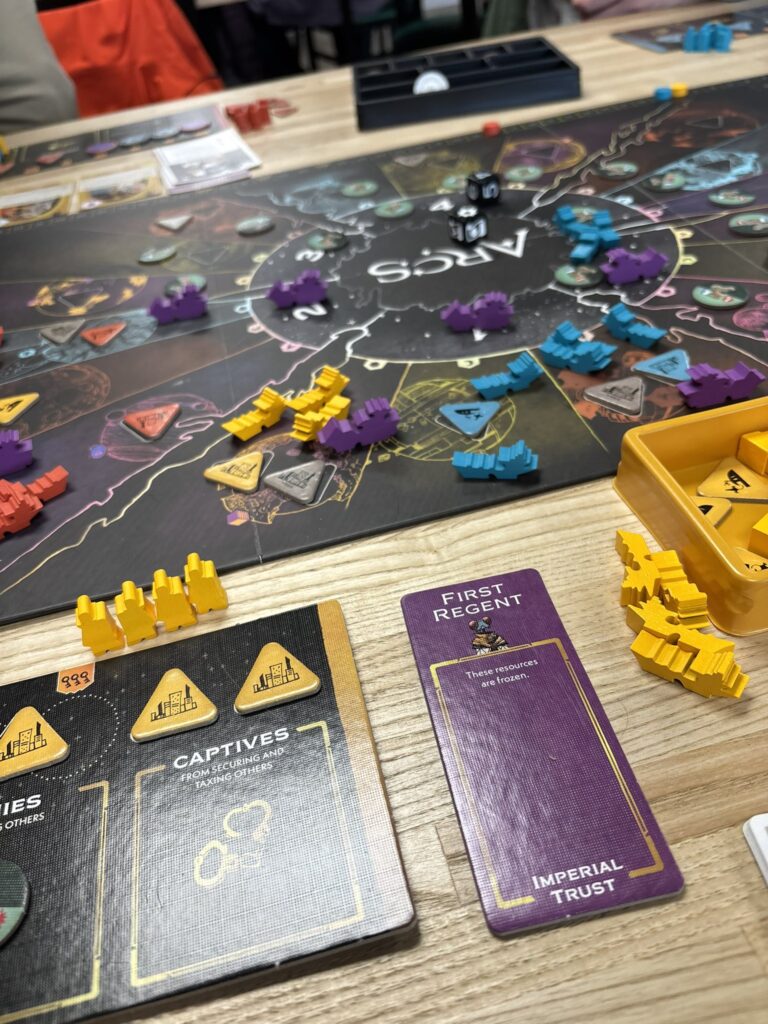
Video Games
2024 was a bit soft on the video game front compared to 2023, which had a ton of great games. This year there are two that stand out above the rest (that I had time to play). I’m getting a bit older and I just sort of want to play the stuff I know well with some exceptions. Give me Quake 3 and the original MOO and I’ll be… almost happy. That said, as predicted when it came out, my favorite single player game of 2024 was far and away UNICORN OVERLORD. I’m not even completely done with the game but it has been my go to for car trips and plane rides and sitting around time on the Switch (which my kids finally got tired of playing on after years of never seeing the thing). The art, the theme, the combat, the food porn and the incredibly depth you can go to equipping and setting the ‘programming’ for your battle groups makes Ogre Battle fanatics like myself blush with joy. That game and ‘Soul Nomad and the World Eaters’ paved the way to Unicorn Overlord being one of my favorite games in that genre, despite the fact that the main two characters are straight out of every generic anime game. I am a horny old goat, so the subtle (compared to Dragon’s Crown) and in some cases hilarious naughtiness of the female character’s outfits and bouncy/swaying just pushes this over the edge into fantastic land in addition to the hilarious food porn sequences. Vanillaware just went to 11 on the tactical and artistic aspects of this game. Overall, a total package that I will be playing for a long time.
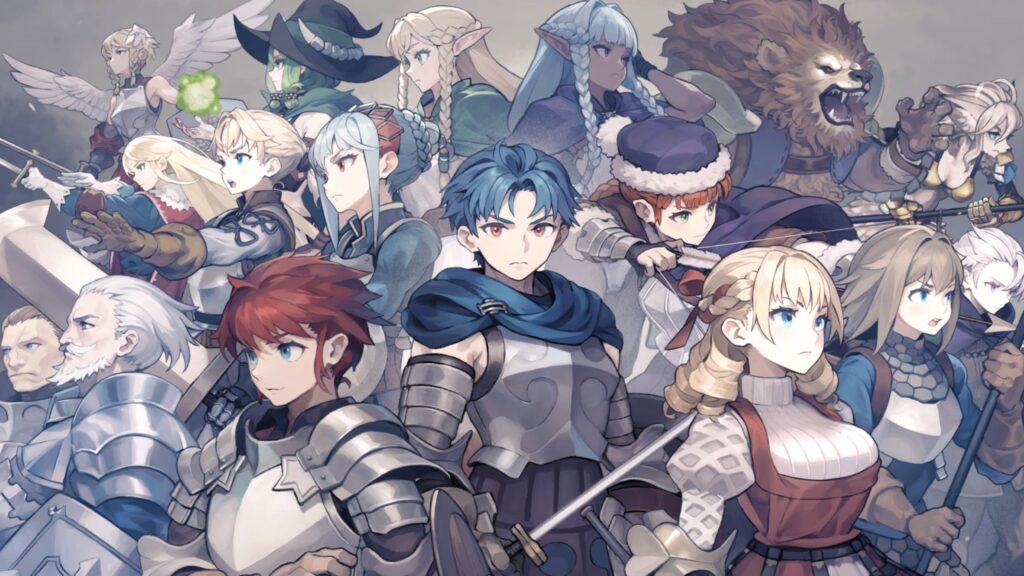
Unicorn Overlord is a single player game though, and does not really encompass the full joy of personal computer or console gaming with frenemies. For 2024, the most excellent, frustrating and deep multiplayer game goes solidly to Solium Infernum.
SI is fundamentally Fantasy Flight’s Warrior Knights but taken to 11 in complexity with way, way too many options to even conceptualize into any coherent strategy as a new player. Yet with more plays, the daemonic flower of this game opens up and it is a thing of beauty and madness extraordinaire. I’m going to do a review of the game on here so I won’t wax and tax much more until then, but like Armello (by the same developers), this is a very strong PC Computer “board game” style game, made even better by having tick-based turns (where everyone turns in their turns to the server and then it runs the turns with the orders all in). It’s pretty fun to play against the AI, but they will lay a beat down on you if you don’t know how to play, which I appreciate greatly as it helps vs human players more than a poofter AI.
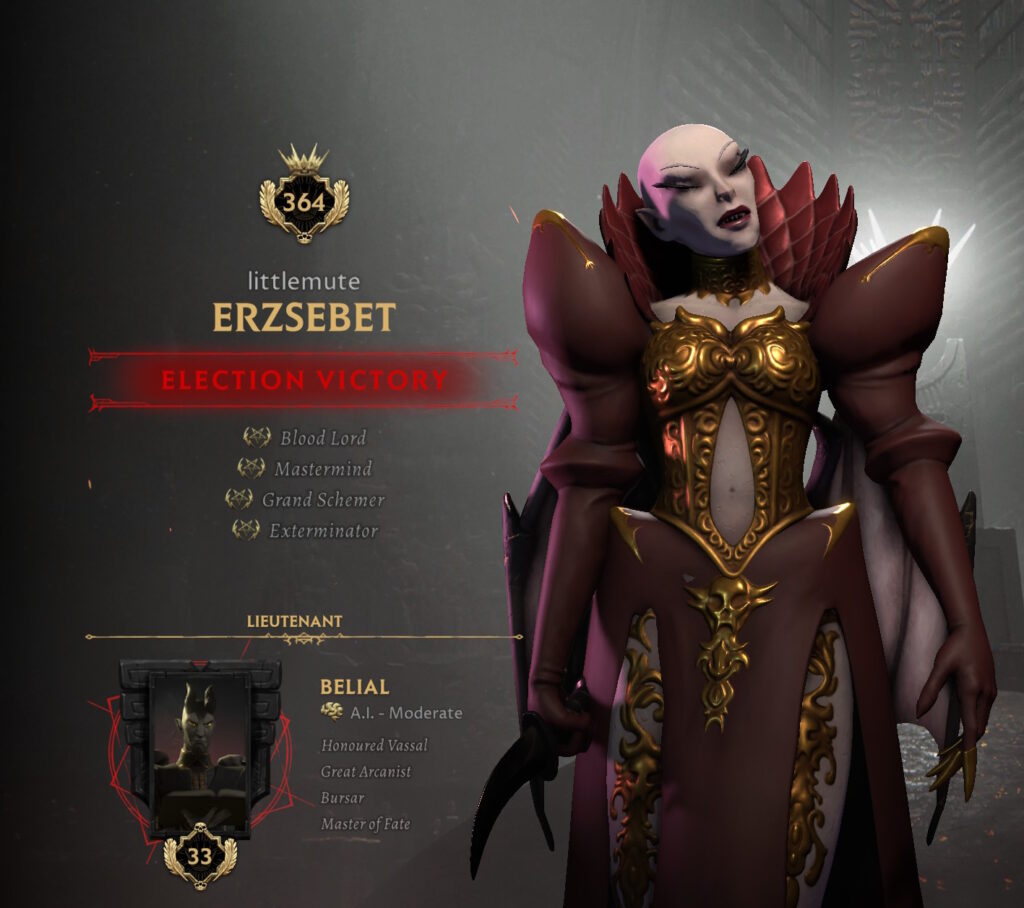
over time, you learn to whip the AI’s ass, even though it seems to cheat, which is fitting really.
Movies
This is so obvious it’s barely worth mentioning as it’s DUNE 2 for sure. I went to see it three times in the theater and it held up every time. I liked Terrifier 3 and the new Mad Max movie quite a bit, but neither hold a candle to the DUUUUUUNNNE. The first one had some dialog problems here and there that annoyed me, a few times the characters spoke a bit too 1990’s if that makes sense rather than ten thousand years in the future. I didn’t notice this much at all in the second installment. The key things for Dune 2 to pull off were the battle scenes and man they knocked those out of the park.
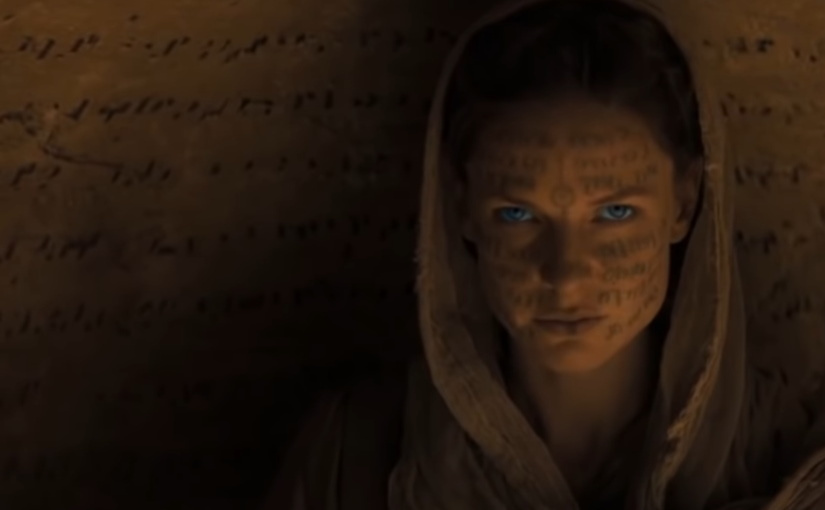
Books
I got stuck on a few books this year, mistakenly starting off the year with the poorly written Gideon the Ninth which I got for my daughter to read and wanted to check it out first. I barely finished and she set it aside after about 100 pages. I then went on to the excellent and horrifying ‘Thirty Years War’ by Wedgwood, then THE TERROR, which was probably the best book I’ve read in a long time. Give it a go (it’s better than the show, which was also quite good).
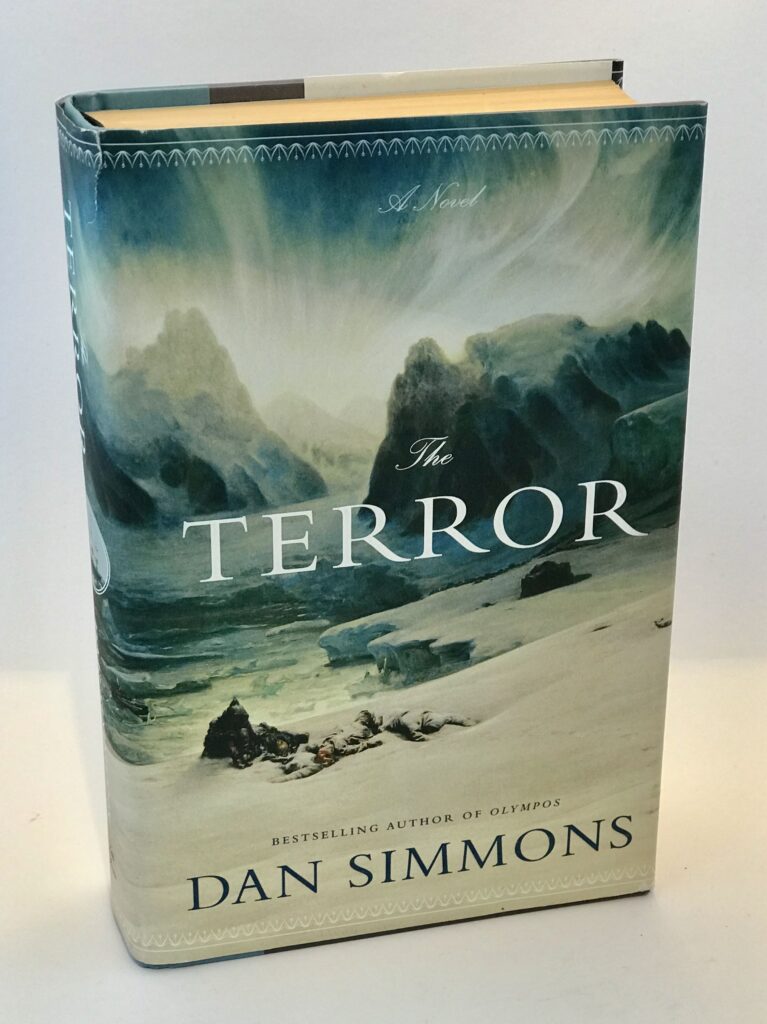
I re-read Good Night, My Sweet by Jim Thompson before starting Confessions of an Economic Hit-man, which is a solid read but really could use a complete rewrite. It reads like a self help book a bit with addons and addons and addons rather than a cohesive text. The core ideas and accounts are important enough to push through the whole thing. You can learn why so many countries despise the United States.
RPG
Tabletop RPG wise I only played /ran Dungeon Crawl Classics this year and I have no regrets! I ran Beneath the Well of Brass twice (followed up by Temple Siege) and in my kid’s campaign, the great little crime module from the Lankhmar line: No Small Crimes. Well of Brass is a great starter module as it has a lot of chances for a TPK, but if those are avoided it’s not super deadly.
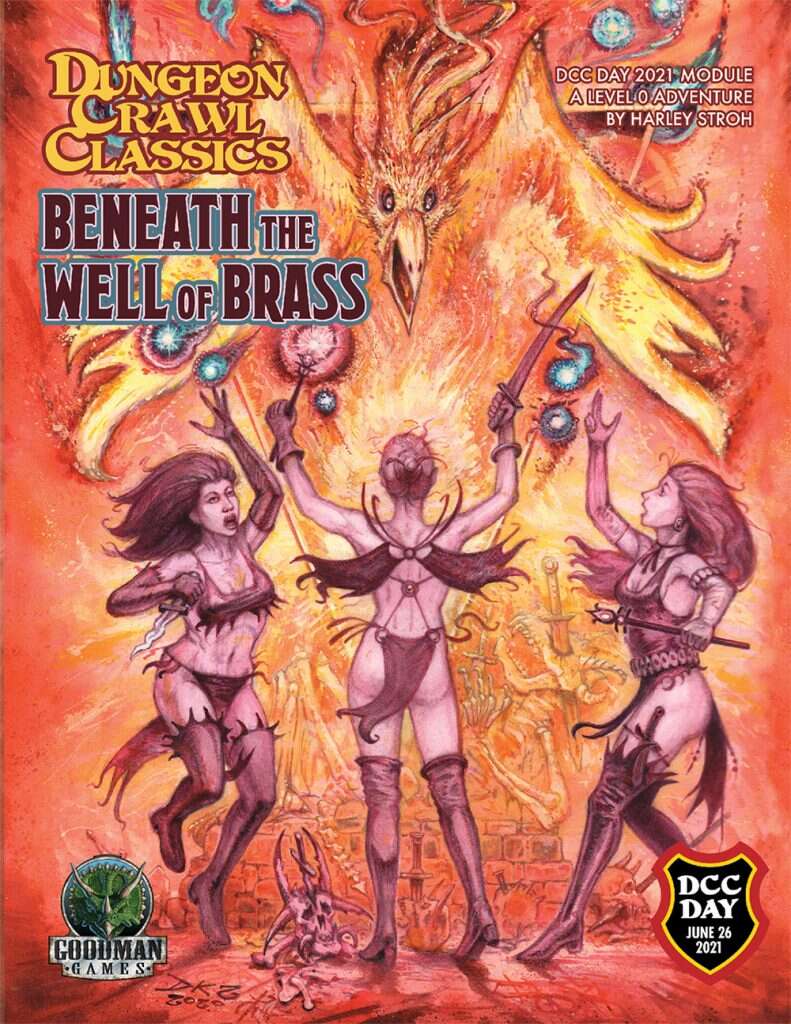
FLUX AI
I spanned a lot of time learning FLUX and COMFYUI: how to write prompts, build out LORAs and generally do silly as things with it. Now in a pinch I could whip out an advertising campaign for just about anything with photos in about 2 days or less of jagging around with it. Of course, I’m using it for stupid stuff such as the following:
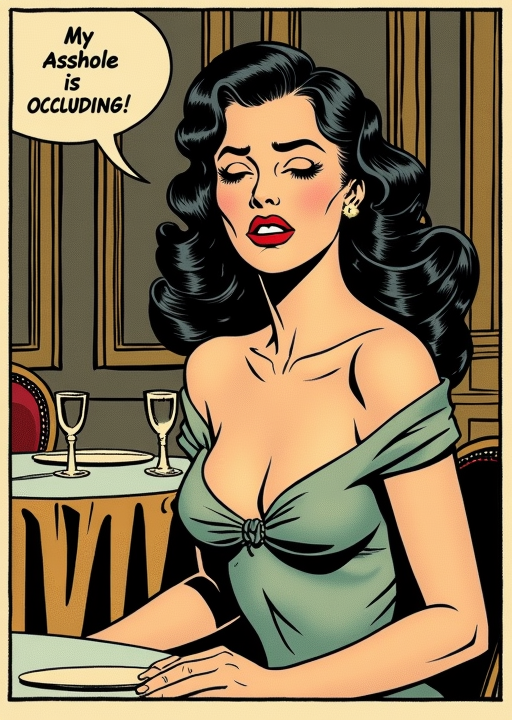
Hottest Chick on the planet, 2024
It’s the same again this year: le Bagnol.

2024: Bagnol’d.
Merry Mraakmas

Return of the greatest fighting game ever: Virtua Fighter 6 in development
We’ve known this for about a year, but there was still skepticism around the project really having legs with Sega. Recently, that has changed and VF6 in all it’s glory is happening. This will make our current decade of tons of amazing fighting games go from very good to the best decade ever.
Why is Virtua Fighter the best if you’ve never played:
- 3 buttons – the game is easy for new players to pick up (for most characters– not Akira)
- Insane character depth: even though the game has a smaller roster than other fighting games, players can play characters in such radically different ways that it just doesn’t matter, you will face a different Akira almost every time you play vs human players
- There are no tiers. I’ve seen tier lists based on tournament wins, but then the next one it’s completely different based on which characters players want to play, so if you decide on a character to main, you can have confidence that you will be able to be successful if you put the work in.
- EVERYONE HAS COMMAND THROWS (and they are awesome)
I’ll likely be writing a lot on this as more information comes to light, but C-Money has some thoughts on critical system design/characters.
Poppy continues to slide into the best genre: METAL
Despite her pop-star looks and elecro-chick-pop start that one of my kids liked– Poppy couldn’t help herself and it looks like she has put out another full on nu-Metal style album.
Out in mid-November, the singles that have dropped have been super heavy and right on the mark for the direction Poppy should always go.
Advanced FASERIP, now with more BLACK TERROR!
Ah the Marvel Heroes FASERIP game from the 80’s, the Superhero game we should have been playing as kids instead of Champions and TMNT– well maybe not TMNT, that deserved roll in the hay or three. While I haven’t played the FASERIP rules in several years, I developed a short campaign for it awhile back but never had the players go for it (and I got lazy and just ran DCC). The version we played was the retroclone called FASERIP by Gubintroll Games and came out in 2015. It was great BUT had one major issue– compatibility with all the Marvel Heroes stuff (and there is a LOT) from the 1980’s and early 90’s. Self-contained, it was a blast and I loved the push your luck character generation system, there just wasn’t anything out for the system to pick up and play, so while we played it, I jetted over to the older game.
That said, there is a NEW edition called Advanced FASERIP that cleans up some rules (which were already streamlined from the older game) adds some more combat options and best yet, comes in a hardback book from DrivethruRPG for a mere 25 bucks!
Why would you want this when there are so many other Superhero games on the market? If you haven’t tried it the Marvel Heroes game where FASERIP came from is excellent, and is by far the most OSR superhero game (rulings over rules) AND has the only meta-currency (karma) outside of Japanese RPG games that makes sense. FATE and other games got their bennies and chips from FASERIP, but IMO, FASERIP does a better job with it than it’s children. Give it a spin, generate some randos and go to town!
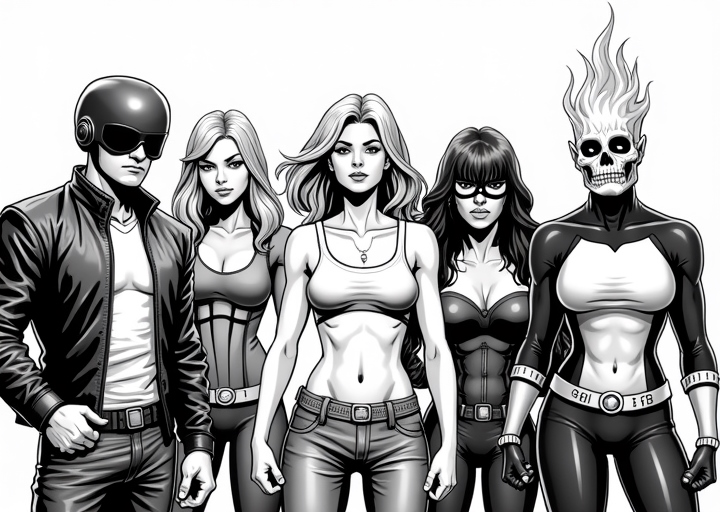
Arcs – Leder Games takes it’s shot at Twilight Imperium and Eclipse
I have been waiting for Arcs since the kickstarter announcement with some trepidation after playing and being pretty lukewarm on Oath which was a fairly expensive game to which has been sitting for a long time on the shelf after a mere 4 plays. I can happily say after 4 games of Arcs that it was well worth the price and wait, especially with the Blighted Reach expansion. I have no idea if it will dethrone Twilight Imperium (or more importantly to our group, Eclipse), but I have some thoughts on this game after about 10 hours of playtime so far, discussions with the play groups (one group more dirty casuls and one as heavy as they can get).
Base Game
Arcs base game comes in a Root sized box and is moderately complex to learn a due to a player’s operations economy being controlled by a card bidding mechanism echoing Twilight Imperium’s role selection mechanic. At it’s core, players play a card from their hand to give them operations (stuff you can do with your pieces) for the turn, a lot like A Study in Emerald except that the first card played during a round effects the cards and operations that the other player’s can play for that round. There is NO trick-taking in Arcs, and if you read or watch a video where someone says that there is, they don’t know shit from shinola as we would say at the Sheepshead table. That said, players of Bridge, Hearts, Euchre, et al will see some similarities in the way cards are played but it is thin and more in the spirit of those games than anything mechanically borrowed. Operation types come in suits, and players must overplay the lead card in the lead suit played in order to get a full set of operations from that suit. For example, if someone plays a Construction card with a 5 on it, the other players must play a Construction card with a higher number, or have a reduced number of Construction operations that turn. Players can also play a card from another suit to get a single operation from that card during that round. While mechanically different with the lead, follow mechanic, it’s a bit like the COIN games where certain players that got operations cannot play any for the next turn or turns.
Victory points are scored by players who fulfill that hand’s Ambitions which, a bit like bids in Bridge, are selected by the leading players at some point during the hand. These include stuff like ‘most stuff blown up,’ ‘most enemy agents captured’ or some accumulation of resources over the other players. The fight over being the lead player is both to get the most out of your operations and to be able to select the ambitions you want to go for during the hand rather than the ones the others want to go for.
With all that, Arcs seems like a card game, but it’s not. The real game involves players running their operations, whether moving ships around and attacking, building stuff or controlling the various parts of the guild in a set of mechanics exactly like bidding for cards from Study in Emerald. The way the Ambitions work can allow long play combos that score massive points in areas the other players may have completely ignored earlier in the game.
My favorite part of the base game and where Leder Games really showed their smarts is the battle mechanic. Part of me thinks LG would like to go back to OATH and use Arcs battle dice instead of the Attack/Defense dice. In Arcs, only the attacker rolls the dice. They have three types to choose from: all out attack, raid and skirmish. Each one has some risk/reward that players have to mull over before rolling. All out attacking can do as much damage to your own fleet as to the enemy’s but you will hammer the crap out of them regardless of your own damage. Skirmishing has no risk to your ships, but has a good chance of not doing much and Raiding gives some ability to steal things from other players with some big risks. It’s a tough decision in the game to make and yet it resolves VERY quickly. Of all the parts of Arcs that are good, the dice combat is great.
Blighted Reach / Campaign game
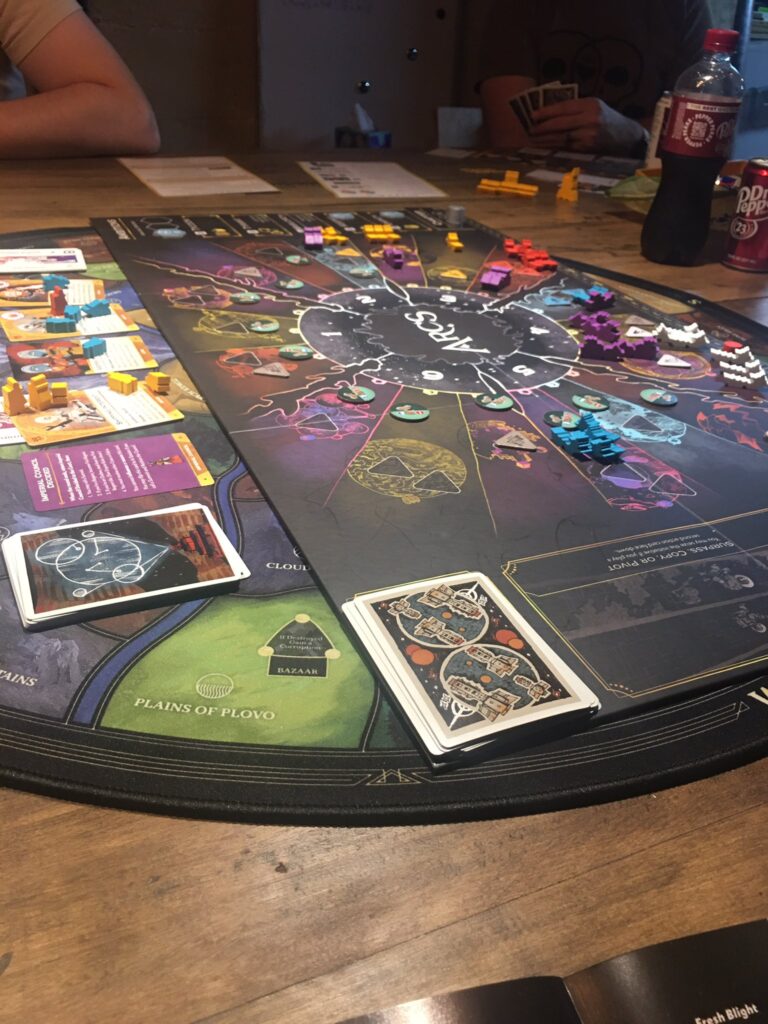
with Dr pepper product placement….
While fun, the base game isn’t super compelling for me– it lacks the meat on the bone for this type of game, and isn’t a ‘smash everyone in the mouth quick’ game like Nexus Ops either. Base Arcs is also extremely reliant on the cards you get and can be very frustrating turn after turn when you just don’t have what you need to do anything and the other players do! it’s not like Euchre or Sheepshead where you get some bad hands but, if you play right, you can mitigate the damage. In base Arcs, a couple rounds of bad cards and you are going to struggle with cobbling together any type of points. It’s fun, but for the time it takes, I would rather throw down Root or Study in Emerald.
The base game IS a good base for Arcs’ massive and completely insane expansion, Blighted Reach. I’ve only gotten one game of this but it was between 4-5 hours long, so I got a solid feel for what this game has to offer in it’s full form. While longer, it is superior to the base game by a wide margin.
I love games where you do not engage with all of the mechanics of the game with a single or even a few play throughs (hello Bios Megafauna and Pax Renaissance!). Arcs has this in spades (trick taking pun detected). The expansion adds four major things to the base game: the Imperial regency/ fleets, the blight, event cards, and best of all: Fates.
The Imperial fleets and Regency which does not allow players to fight each other early game and taxes the game by sucking much needed resources from the Reach to the Imperium. I was quite worried about the complexity of this addition as there is a first Regent who has to run a set of operations in a little booklet periodically in the game and the activities and effects of the Imperial fleet seems pretty daunting at first, but it’s all plainly and logically designed. Since there are regents, of course there are rebels (outlaws) who can attack anyone anywhere (but don’t get the protection of the Imperial fleets).
Secondly is the Blight, which is some alien entity that spreads from planet to planet, much like the Amoeba in the old Amoeba Wars game from the early 80’s. This had very little effect in our game, but again, you do not see all the game’s mechanics in a single play through (or even a campaign).
Third are Event cards (gasp! is this really a Cole Wherle game?) that add the much needed roller coaster aspect to Arcs that was totally missing in Oath (and is not needed at all in Root). These can be mitigated pretty easily by the players, but when they fire off, they can do a lot of damage to everyone. They are triggered when a player plays an Event card from their hand and some dice decide whether the Regent governs the reach or an event takes place. Players have some control over whether the events happen most of the time.
Lastly are the Fate cards, which are most analogous to the Aliens from Cosmic Encounter but not only do they have different rules and cards, they have their own way to ‘win’ as that Fate through the entire campaign. At the end of a game (in the campaign) players “Resolve their Fates” and determine if they can (if they won their Fate’s goals) or want to continue with their original Fate into the next game or draw new ones. Where have I read the exact phrase “Resolve fates at the end of an Act before” ? Tenra Bansho Zero! If Leder Games wasn’t familiar with the Karma system in TBZ I would be uncannily surprised based on this part of Arcs.
Fates are the part of the game design where Arcs goes from a somewhat normal 4X space game with interesting mechanical flourishes into one of the most monstrous and insane games I’ve ever played. Each Fate has a path through the Acts of the campaign games that must be abandoned if the player fails to meet their Fate’s objectives, at which point they choose from Fates only available in later Acts of the campaign– and these are much more aggressive and dangerous Fates to the Reach AND the other players. So, if a sad sack of a player takes the high hard one from the other players in the game, you can bet they are going to come back with the nastiest Fate they can choose and anal-ly re-thread the occupants of the Reach as much as possible. The amazing thing about FATES in the first game of a campaign is that they can and will often have common goals and the objectives of one may compliment the objectives of the other. While under the thumb of the Imperium (or as outlaws too), players may work together to further their own goals as there is no winner until the last game of the campaign. One player may WANT another player to outlaw and attack the Imperium to free up some of those juice resources taxed away for Imperial use.
All that said, how does the game play? It’s smooth, has lots of interesting choices but for ‘modern’ game sensibilities, it’s extremely long (for older gamers, it’s not that long at all compared to some of the true monsters), and I won’t pretend the complexity level wasn’t daunting at first. You are not going to be able to get an Act (game) in a campaign on a school night unless you plan to start early and GO LATE. I think the fumbling over the rules in a group’s early games will be replaced with ANALysis paralysis and negotiation in later plays, so I would guess at minimum you are looking at 45 minutes to an hour per player. This length puts Arcs in a completely different realm than Root and Ahoy, and joins the mega-game zone like Republic of Rome, Twlight Imperium, Warrior Knights, Here I Stand/Virgin Queen and AH Civilization. I couldn’t be happier about that! With Arcs, we do not have a game that will compete with Root or Eclipse, both of which can be played in an hour and a half to two hours, nor with deeper but shorter games like Study in Emerald or Pax Renaissance that can be completed in about an hour with experienced players. If we bust out Arcs, it’s because we want to play a long, in depth game with a lot of player interaction.
So far after just 4 plays, Arcs base game is Ok, but with Blighted Reach, Arcs is a totally insane engine for a huge scope of play as well as a massive design accomplishment from Leder games. I cannot wait to get more games in. Time will tell if this hits the same spot folks want hit from Twilight Imperium, but I suspect we will be playing this game for many years.

Someone thought the El Grande marker was too smooth…
This is what I thought life would be like when I grew up
I shit you not.

